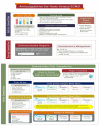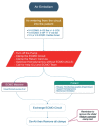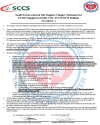The Saudi Critical Care Society extracorporeal life support chapter guidance on utilization of veno-venous extracorporeal membrane oxygenation in adults with acute respiratory distress syndrome and special considerations in the era of coronavirus disease 2019
- PMID: 34078721
- PMCID: PMC9149722
- DOI: 10.15537/smj.2021.42.6.20200520
The Saudi Critical Care Society extracorporeal life support chapter guidance on utilization of veno-venous extracorporeal membrane oxygenation in adults with acute respiratory distress syndrome and special considerations in the era of coronavirus disease 2019
Abstract
Extracorporeal membrane oxygenation (ECMO) is considered as a supportive treatment that provides circulatory and ventilatory support and can be thought off as a bridge to organ recovery. Since 2009, it has been applied as a rescue treatment for patients with severe adult respiratory distress syndrome (ARDS) mainly due to viral causes. In December 2019, several patients presented with a constellation of symptoms of viral pneumonia in China. A new strain of the corona virus family, called COVID-19, has been discovered to be the cause of this severe mysterious illness that was named severe acute respiratory syndrome coronavirus 2 (SARS‑CoV‑2). This new virus continued to spread across the globe leading to the World Health Organization announcing it as a pandemic in the early 2020. By the end of March 2021, the number of COVID-19 cases worldwide exceeded 126 million cases. In Saudi Arabia, the first confirmed case of COVID-19 was reported in the 2nd March 2020. By the end of March 2021, the total number of confirmed COVID-19 cases in Saudi Arabia is just above 360,000. In anticipation of the need of ECMO for the treatment of patients with SARS‑CoV‑2 based on the previous Middle East respiratory syndrome coronavirus pandemic experience, the Saudi Extra-Corporeal Life Support (ECLS) chapter that is under the umbrella of the Saudi Critical Care Society (SCCS) convened a working group of ECMO experts. The mission of this group was to formulate a guidance for the use of ECMO as a last resort for patients with severe ARDS, especially with COVID-19 based on available evidence. The ECLS-SCCS chapter wanted to generate a document that can be used to simple guide, with a focus on safety, to provide ECMO service for patients with severe ARDS with a special focus on SARS‑CoV‑2.
Keywords: ARDS; Covid-19; ECMO; adult; respiratory failure.
Copyright: © Saudi Medical Journal.
Figures















Similar articles
-
Extracorporeal Membrane Oxygenation (ECMO) in Critically Ill Patients with Coronavirus Disease 2019 (COVID-19) Pneumonia and Acute Respiratory Distress Syndrome (ARDS).Med Sci Monit. 2020 Aug 6;26:e925364. doi: 10.12659/MSM.925364. Med Sci Monit. 2020. PMID: 32759887 Free PMC article. Review.
-
Extracorporeal membrane oxygenation support for SARS-CoV-2: a multi-centered, prospective, observational study in critically ill 92 patients in Saudi Arabia.Eur J Med Res. 2021 Dec 9;26(1):141. doi: 10.1186/s40001-021-00618-3. Eur J Med Res. 2021. Retraction in: Eur J Med Res. 2024 Dec 30;29(1):634. doi: 10.1186/s40001-024-02243-2. PMID: 34886916 Free PMC article. Retracted.
-
Extracorporeal life support in COVID-19-related acute respiratory distress syndrome: A EuroELSO international survey.Artif Organs. 2021 May;45(5):495-505. doi: 10.1111/aor.13940. Epub 2021 Mar 28. Artif Organs. 2021. PMID: 33590542 Free PMC article.
-
A Case of Extracorporeal Membrane Oxygenation as a Salvage Therapy for COVID-19-Associated Severe Acute Respiratory Distress Syndrome: Mounting Evidence.J Investig Med High Impact Case Rep. 2020 Jan-Dec;8:2324709620957778. doi: 10.1177/2324709620957778. J Investig Med High Impact Case Rep. 2020. PMID: 32911986 Free PMC article.
-
Veno-Venous Extracorporeal Membrane Oxygenation in COVID-19-Where Are We Now?Int J Environ Res Public Health. 2021 Jan 28;18(3):1173. doi: 10.3390/ijerph18031173. Int J Environ Res Public Health. 2021. PMID: 33525739 Free PMC article. Review.
Cited by
-
Physical Rehabilitation and Mobilization in Patients Receiving Extracorporeal Life Support: A Systematic Review.Crit Care Explor. 2024 May 24;6(6):e1095. doi: 10.1097/CCE.0000000000001095. eCollection 2024 Jun 1. Crit Care Explor. 2024. PMID: 38787294 Free PMC article.
References
-
- Oken MM, Creech RH, Tormey DC, Horton J, Davis TE, McFadden ET, et al. . Toxicity and response criteria of the Eastern Cooperative Oncology Group. Am J Clin Oncol 1982; 5: 649–655. - PubMed
-
- Combes A, Hajage D, Capellier G, Demoule A, Lavoué S, Guervilly C, et al. . Extracorporeal membrane oxygenation for severe acute respiratory distress syndrome. N Engl J Med 2018; 378: 1965–1975. - PubMed
-
- Extracorporeal Life Support Organization. ELSO Guidelines For Adult Respiratory Failure V 1.4: ELSO; 2017. [Updated 2017. 2021 January 12]. Available from: https://www.elso.org/Portals/0/ELSO%20Guidelines%20For%20Adult%20Respira...
-
- White DB, Angus DC.. Preparing for the sickest patients with 2009 influenza A (H1N1). JAMA 2009; 302: 1905–1906. - PubMed
Publication types
MeSH terms
LinkOut - more resources
Full Text Sources
Medical
Miscellaneous

